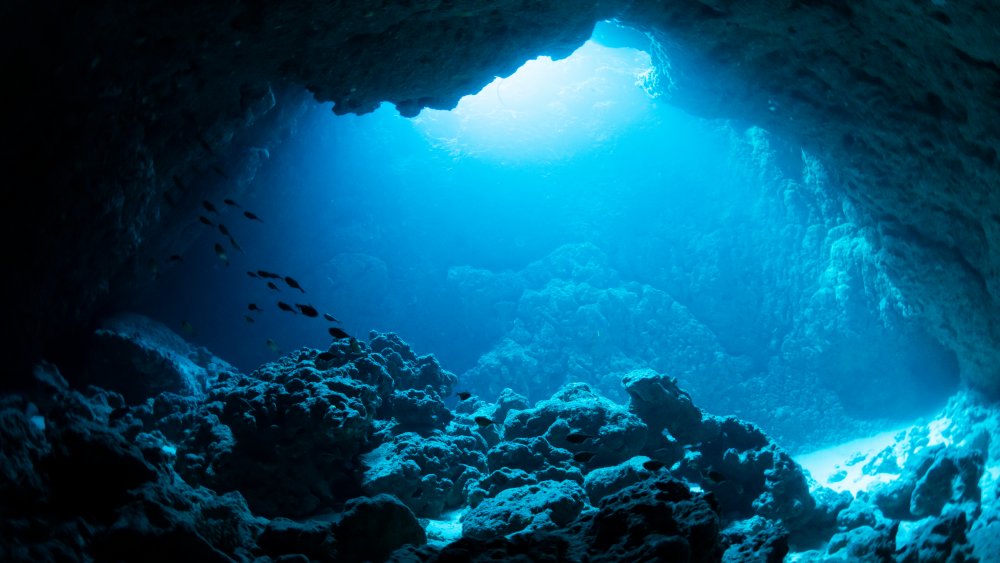The Truth About The World's Deadliest Diving Spot
Diving isn't usually thought of as a dangerous sport. Many who aren't familiar with diving don't understand the risks that come with it. Hey, they've got oxygen tanks. They'll be fine. But tanks only hold so much air. And the underwater world holds other dangers to divers beyond drowning. Pressure, equilibrium, injury, wildlife, temperature are all factors that must be accounted for in order for a diver to return to the surface unharmed.
According to Diver magazine, roughly 200 people die in diving accidents each year, and many of those deaths have a lack of experience at their root. Experience is important, but it matters very little in the Blue Hole at the edge of the Red Sea, which claims the lives of divers expert and novice alike. The Blue Hole, also known as the "underwater cathedral," is a sinkhole that measures around 100 meters deep. It doesn't have much current and contains an abundance of wildlife. It's also known as the deadliest diving spot in the world and, despite the warning, divers continue to enter its water.
A curse on the underwater cathedral
The "underwater cathedral" is said to be cursed. Humans often try to explain away high mortality rates with the supernatural, and sinkholes have been equated with gates to the underworld in various cultures, like the ancient Mayan and Aztec peoples. It would make sense, since so many divers enter the Blue Hole only to find their spirits crossing over into the realm of the dead.
The legend behind the Blue Hole claims that a young woman was forced by her father to drown herself in the "underwater cathedral," where her spirit is said to reside today. The superstitious believe that this lost and restless soul lures divers to their deaths as she tries in vain to get revenge on her father. A technical diver who's often responsible for recovering bodies of the deceased from within the sinkhole, Tarek Omar, says he's never seen a spirit or monster of any kind. He doesn't think the cause is supernatural but rather blames the deaths on a well-known effect of diving.
So many bodies they stopped counting
When Tarek Omar was asked how many bodies he's pulled from the depths of the "underwater cathedral," also nicknamed the "divers' graveyard," he replied, "I stopped counting at some point." He's collected enough remains to be known as "the bone collector," if that gives you an idea, but reports say he's recovered at least 20 bodies from the Blue Hole. So, what is causing these divers to die?
Nitrogen makes up the majority of the air we breathe every day, and it never causes us problems because we don't live under extreme atmospheric pressure. Divers, on the other hand, start feeling this pressure after only 10 meters, when nitrogen starts to dissolve into their bloodstream at higher quantities. The effects of the nitrogen can make divers feel as if they're drunk, and it only gets worse the further down you go. In the Blue Hole, divers can reach a 100-meter depth, an adventurous goal they often want to attempt. Making it down that far is like trying to navigate out of a dense forest at night after downing a bottle of Everclear. It's not easy.
Divers end up disoriented near the bottom not only from the nitrogen, but thanks to an underwater tunnel shimmering with sunlight from the other side. These confused divers end up in the tunnel because they think they're moving back up to the surface and, like we said before, oxygen tanks only hold so much. The end result is the world's deadliest diving spot.


